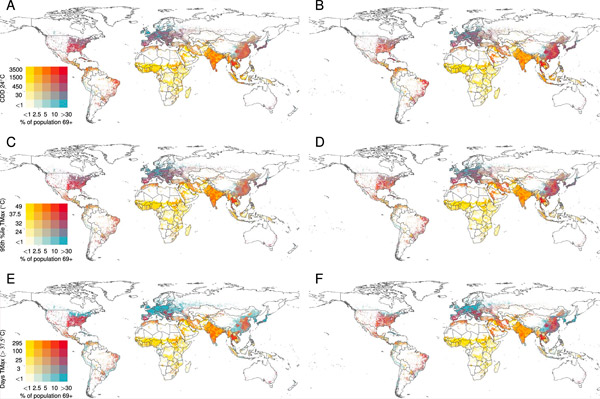New publications
By 2050, up to 246 million older adults may be at risk of exposure to high temperatures due to global warming
Last reviewed: 02.07.2025

All iLive content is medically reviewed or fact checked to ensure as much factual accuracy as possible.
We have strict sourcing guidelines and only link to reputable media sites, academic research institutions and, whenever possible, medically peer reviewed studies. Note that the numbers in parentheses ([1], [2], etc.) are clickable links to these studies.
If you feel that any of our content is inaccurate, out-of-date, or otherwise questionable, please select it and press Ctrl + Enter.

A team of earth scientists and environmentalists from the CMCC Foundation (Euro-Mediterranean Centre on Climate Change), together with two colleagues from Boston University, have found evidence that up to 246 million people worldwide could be at risk of heat stress by 2050 due to global warming and an aging population.
In their paper published in the journal Nature Communications, the group describes how they used climate models to estimate global hotspots and compared them with population projections for the same areas.
The planet is getting warmer due to human-caused greenhouse gas emissions that are released into the atmosphere. However, not all parts of the planet will warm equally – some places, such as parts of Africa and Asia, are expected to become hotter than others.
Unfortunately, at the same time, the number of people over 60 is also growing – their numbers are projected to double by 2050, with many of them living in Asia and Africa – countries where air conditioning is rare.
In this new study, the team noted that while much research has been done to better understand the impact of extreme heat on older people, little has been done to figure out how many of them might be at risk in the coming years. To find out, they looked at both climate and population models out to 2050.
Climate models have shown that the average number of extremely hot days worldwide will increase from about 10 to 20 over the next 30 years. The researchers also found that these hot days will get hotter depending on where they occur.

Global intersection of ageing and heat exposure in the current climate (left column) and around 2050, SSP2(45) (right column).
A, B. Proportion of population aged 69+ exposed to annual Cooling Degree Days (CDDs).
C, D. Annual temperatures corresponding to the 95th percentile of local extreme heat exposure (TMAX95).
E, F. Annual number of days with TMAX > 37.5°C.
Source: Nature Communications (2024). DOI: 10.1038/s41467-024-47197-5
And demographic models have shown that about 23% of people over 69 will live in parts of the world that will experience these dangerously high temperatures, up from just 14% today.
Overall, the team found that between 177 million and 246 million people over the age of 69 could be living in places where dangerously high temperatures will regularly occur by 2050, putting many of them at risk of heat-related illness or death.
